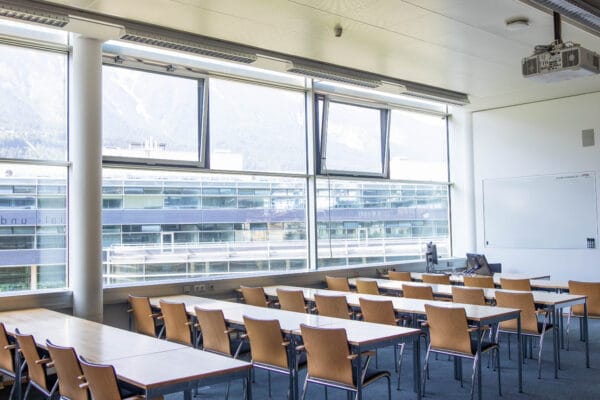
NAME:
MCI - SR 303
BUILDING:
Management Center Innsbruck
FLOOR:
3
TYPE:
Seminar Room
CAPACITY:
54
ACCESS:
Only Participants
EQUIPMENT:
Beamer, Handicapped Accessible, PC, Sound System, Whiteboard, WLAN (Eduroam), Microphones
Aufeis are multi-layered ice formations that develop in mountain catchments due to winter groundwater or subglacial flow. They serve as valuable indicators of winter hydrological processes. As part of our research on winter groundwater circulation in a mountainous catchment, we initially focused on a proglacial aufeis in the floodplain of the Shár Shaw Tagà (Grizzly Creek) catchment (Yukon, Canada), near a rock glacier. Our team had already established time-lapse monitoring and field observations to assess its annual formation. In 2021, we continued time-lapse monitoring and introduced terrestrial LiDAR to track surface topography changes. Hydrochemical sampling, isotopic analysis, and cryogenic precipitate studies were planned for summer 2022. However, the aufeis failed to form in winter 2022 and has not reappeared despite continued monitoring in 2023 and 2024. This unexpected interruption led to a lack of field data and posed challenges for my PhD research. However, it also opened an opportunity to investigate a critical question: what drives the cessation of aufeis formation? Consequently, we adapted our methodology, expanding the study’s spatial and temporal scope. Using remote sensing, we analyzed aufeis formation trends from 1984 to 2024 across the broader Shä́r Ndü Chù (Duke River) catchment, a 654 km² watershed with 9% glacier coverage, encompassing the Shár Shaw Tagà subcatchment and the original aufeis site. This shift in approach revealed heterogeneous aufeis formation patterns across different sites. These patterns are linked to glacio-hydrological and meteorological changes in rapidly deglaciating mountain catchments. The unexpected non-formation of the targeted aufeis, while initially a challenge, ultimately led to a broader study, providing new insights into mountain hydrology and water resources in cold regions.

We and use cookies and other tracking technologies to improve your experience on our website. We may store and/or access information on a device and process personal data, such as your IP address and browsing data, for personalised advertising and content, advertising and content measurement, audience research and services development. Additionally, we may utilize precise geolocation data and identification through device scanning.
Please note that your consent will be valid across all our subdomains. You can change or withdraw your consent at any time by clicking the “Consent Preferences” button at the bottom of your screen. We respect your choices and are committed to providing you with a transparent and secure browsing experience.